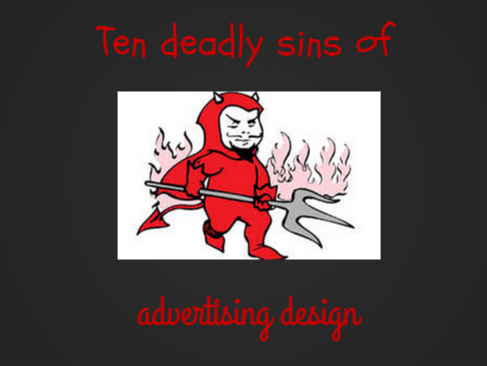Tag: no call to action

10 Deadly Sins of Graphic Design Advertising
We found advertising works the way the grass grows. You can never see it, but every week you have to mow the lawn. Good thought from the Nielsen Company. Do you occasionally read or watch ads? We would say people don’t read ads. However, they do read or watch what interests them. So if you are…